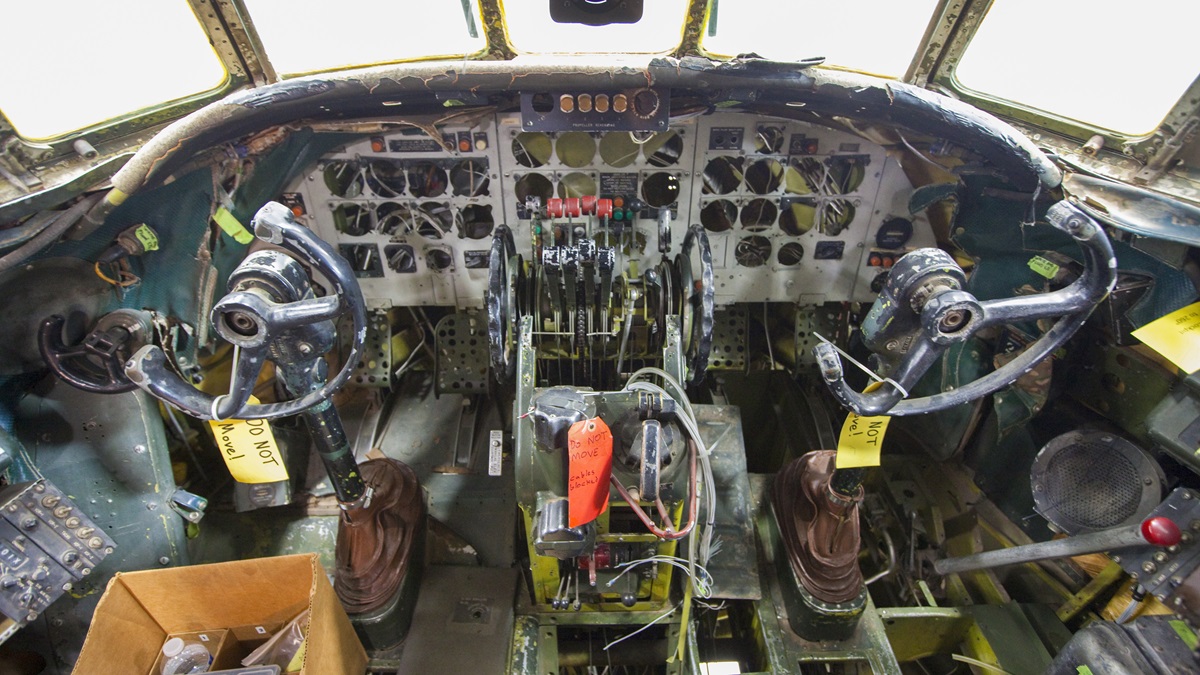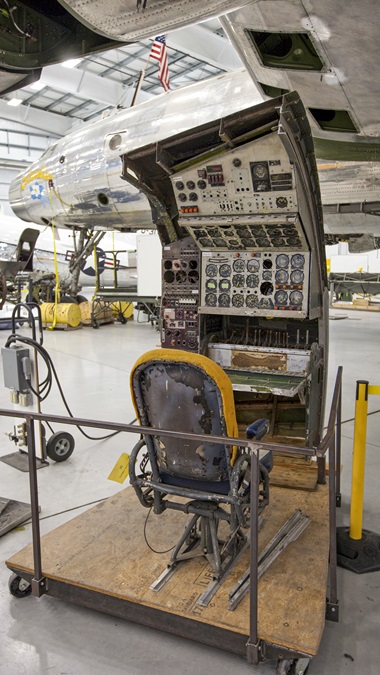The first Air Force One
Update on the restoration of ‘Columbine II’
By Tim Wright
“After putting several million dollars and a few years into this, we’re thinking: ‘You know, we really need this done and we can’t do it ourselves,’” says Phil Douglas, executive director of the nonprofit First Air Force One.
'Columbine II'




His admission is presented with the clarity and candor that underscores his decades as an engineer. “It’s hard for a guy to admit you can’t do it yourself and you need help. But we finally did.”
The “it” Douglas refers to is the restoration of Columbine II, the Lockheed Constellation that the Air Force designated as a VC-121A. Columbine II is the aircraft that President Dwight D. Eisenhower used for two years at the start of his presidency. It is the first presidential aircraft to be known by the now-famous moniker “Air Force One.”
The Columbine II restoration is taking place in the heart of Virginia’s Shenandoah Valley at Dynamic Aviation’s headquarters in Bridgewater. Despite its small-town roots, Dynamic Aviation has quietly grown a global footprint working with U.S. government agencies, the military, and corporations interested in what is happening on the ground.
Supporting those missions is a workforce adept at extensively modifying their fleet of Beechcraft King Airs, de Havilland Dash 8s, and Boeing 737s. Before Columbine II arrived, employees had already restored two Beech 18s and converted a Douglas C–47 into a pristine DC–3.
The effort to restore Columbine II began as a personal mission by the company’s founder and chairman, Karl Stoltzfus. Stoltzfus learned in 2014 that Columbine II was languishing in an Arizona desert and would be scrapped unless a new owner was found. A lifelong aviator with a passion for history, Stoltzfus made Columbine II his calling. In a Smithsonian Air & Space magazine article, Stoltzfus recalled his first visit with the aircraft: “Every fiber of my body said, ‘this is something you’re supposed to do. This isn’t a financial consideration thing.’” Columbine II arrived in Bridgewater on March 22, 2016. Sadly, Stoltzfus died November 27, 2020.
“This was one of Karl’s passions and it was something I shared with him,” says Douglas, who was vice president for business development at Dynamic when Stoltzfus died. “Up till now, [the restoration work has] been ‘what could we afford to not have working on our profit making business?’”
Douglas says his current responsibility is to keep the Columbine II work moving forward while looking for financial help to finish the restoration. To support that effort, the company formed First Air Force One as a 501(c)(3) and Columbine II was donated to the new organization. Dynamic is currently building a new hangar so the public can visit the company’s vintage aircraft collection and Columbine II.
“When we start to mention the Constellation to anybody with aviation, their eyes are popping open,” says Douglas. “This is going to be a flying museum. A flying, living, museum” that will travel to airshows around the country. To underscore the aircraft’s historical importance, Douglas points out Eisenhower wrote his famous “Atoms for Peace” speech aboard the aircraft. “Our purpose is to rebuild it to the way Eisenhower had it, to tell the story of Eisenhower and to tell a story of the country at that time.” Despite being a general, Douglas says Eisenhower “was very much a man of peace.”
Tim Wright is a freelance journalist, photographer, and pilot living in Virginia.


